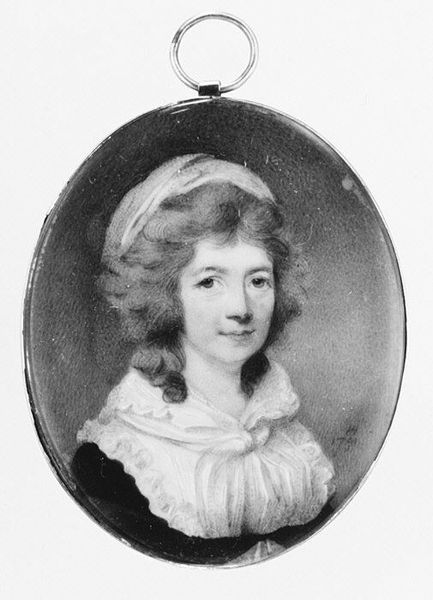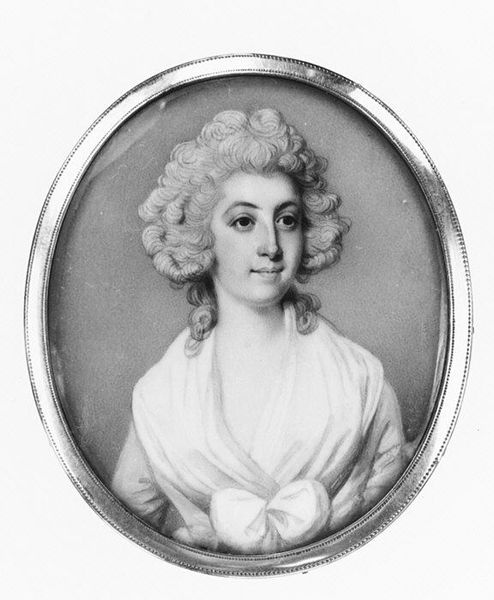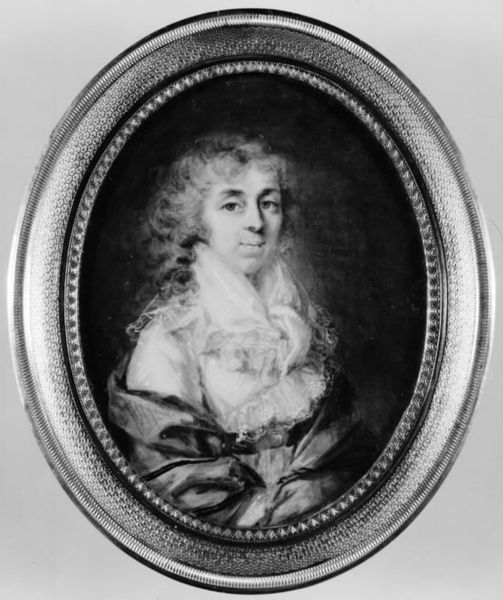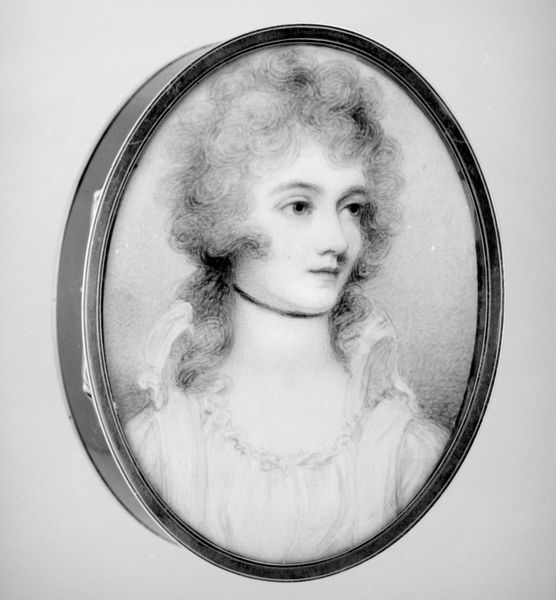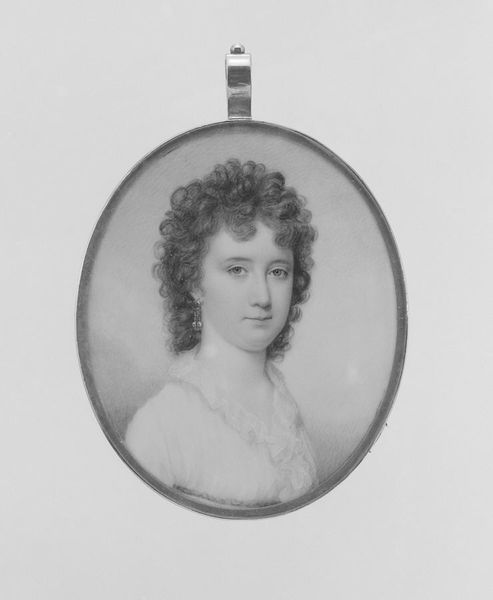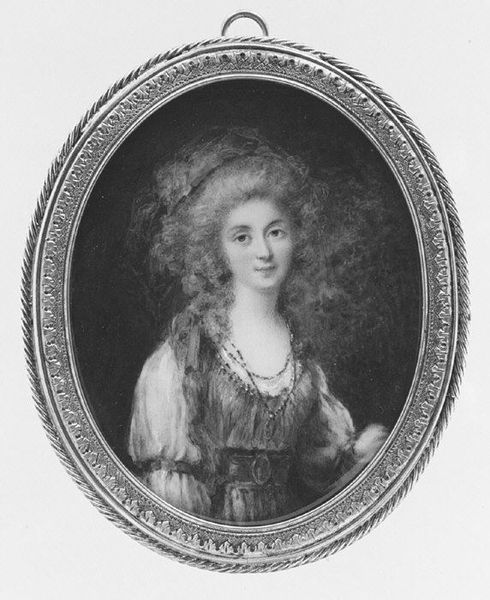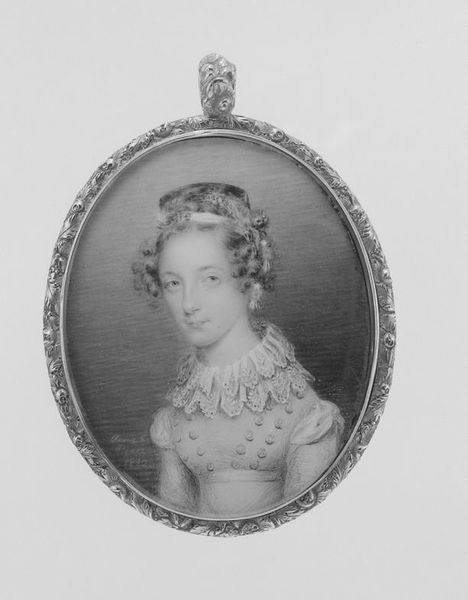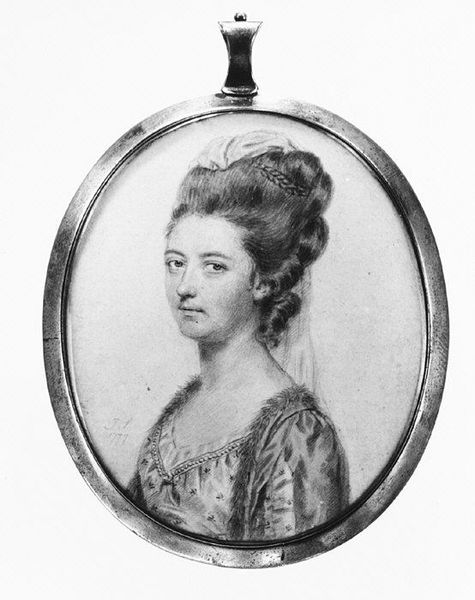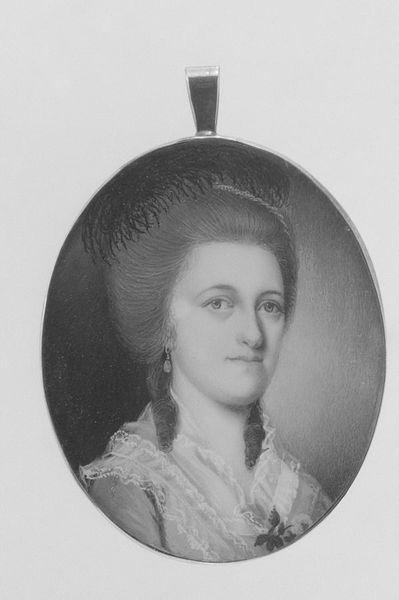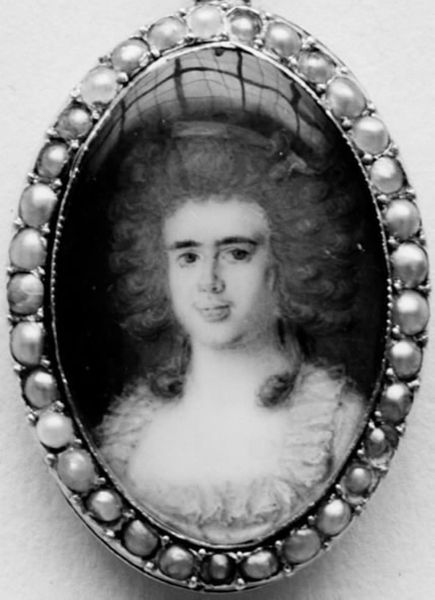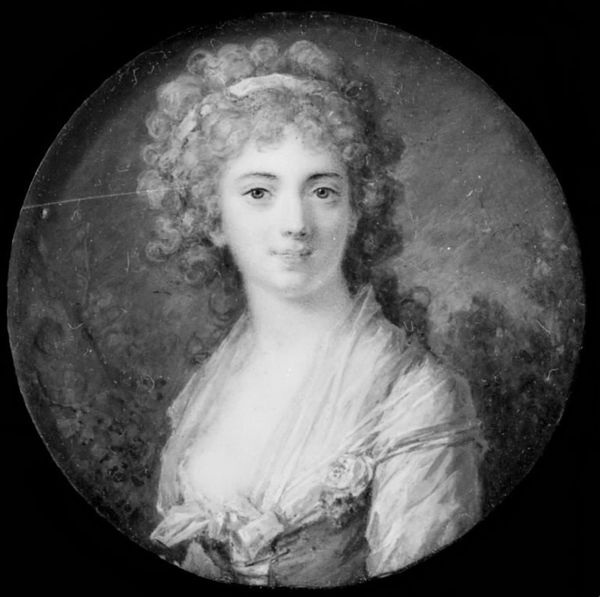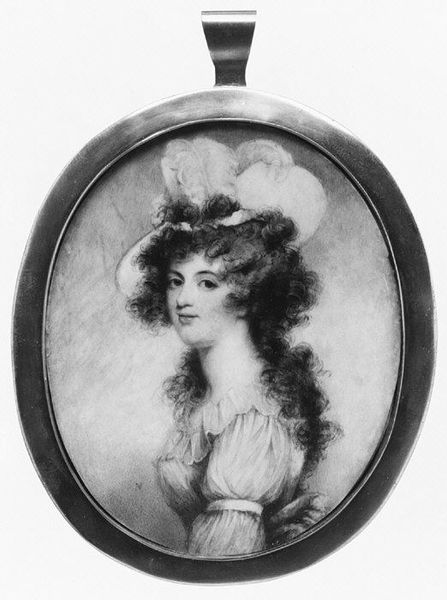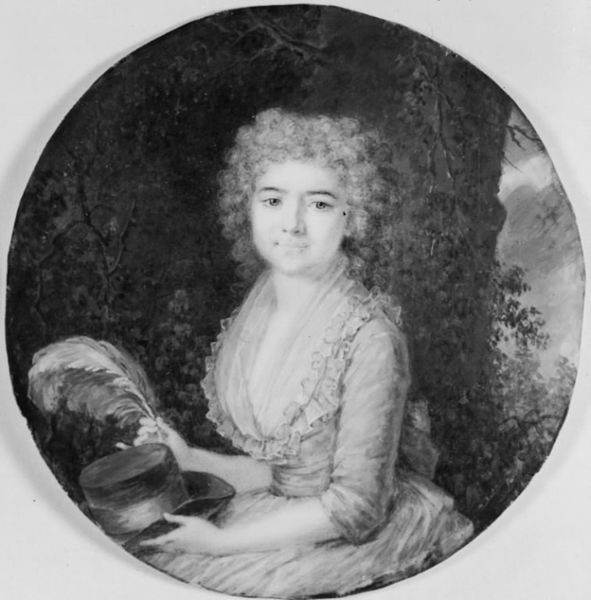
painting
#
portrait
#
neoclacissism
#
painting
#
black and white
#
miniature
#
realism
Dimensions: Oval, 2 1/4 x 1 7/8 in. (56 x 47 mm)
Copyright: Public Domain
Editor: This is James Nixon’s "Portrait of a Woman," dating to between 1785 and 1795. It's currently housed here at the Metropolitan Museum of Art. There's something so delicate about the brushstrokes, even in a monochrome palette. What is your immediate reaction to the formal qualities of this work? Curator: The most striking formal element is the miniaturization. Notice how the artist condenses the essence of portraiture into a compact, almost self-contained unit. The tight oval framing concentrates the viewer's attention, amplifying the nuances of line and form. Editor: Yes, and how do you see that influencing our interpretation? Curator: The tight composition invites us to analyze the relationship between the soft rendering of the subject's features and the textured details of her clothing and hair. See how the contrast between the smooth skin and the intricately curled hair generates a dynamic tension within the small format? The painter focuses all of the compositional load to those contrasted textures. Editor: I see that now! It’s also interesting how the almost mathematical precision of the framing clashes with the fluid quality of the medium. The sharp silver edging and perfectly symmetrical ring create tension with the soft grey and brown tones, drawing the eye inward. Curator: Precisely. Moreover, the black and white palette serves not as a limitation but as a method. The careful modelling showcases the artist’s deft ability with chiaroscuro and textural differences. The monochrome heightens the sculptural effect. It's less about colour than it is about form, line and contrast. Editor: It's fascinating how a portrait without colour can still feel so richly detailed. Thanks for pointing that out; I wouldn’t have noticed that on my own. Curator: My pleasure. These small pieces reveal enormous artistic consideration, often more than larger-scale works.
Comments
No comments
Be the first to comment and join the conversation on the ultimate creative platform.
